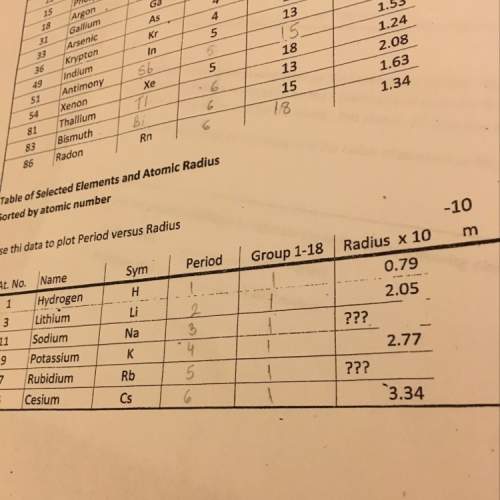N2 (g) + c2h2 (g) → 2hcn (g)
t = 298k , p = 100 bar
none of the species may be treated a...

Chemistry, 22.08.2019 02:10, dadonelson2109
N2 (g) + c2h2 (g) → 2hcn (g)
t = 298k , p = 100 bar
none of the species may be treated as ideal gases. the feed consists of stoichiometric amounts and nitrogen and acetylene with no hcn present.
a) calculate gibbs free energy using formation data. my calculated as ~4 j/mol
b) write down the appropriate expressions for the chemical potentials of the three species which participate in this reaction. my u(i) = u(i)* + rt ln (f(i)/p*) for each species, where p* is 1 bar reference state and f(i) is fugacity.
c) give an equation that expresses how the chemical potentials you obtained for part are inter-related when the reaction attains equilibrium.
d) express the mole fraction of each species in terms of the extent of reaction, ξ, and the initial moles of acetylene, n0.
e) use the equations you obtained for parts (c) and (d), generalized correlation tables, and the lewis-randall rule to calculate the equilibrium mole fraction for each species. take n0 = 1mole.

Answers: 1
Other questions on the subject: Chemistry


Chemistry, 22.06.2019 01:00, jescanarias22
Which statement correctly describes potassium iodide, ki? there is a one-to-one ratio of potassium ions to iodide ions. potassium gains electrons and iodine loses electrons during the reaction. the lattice is held together by potassium anions and iodide cations.
Answers: 1

Chemistry, 22.06.2019 01:30, adrian08022
When an object falls through the air and encounters air resistance its overall speed will be than if it had not encountered air resistance? (one word answer)
Answers: 2

Chemistry, 22.06.2019 14:30, emilymartinez75
Need ! asap will mark 10 pts using the room temperature line (orange line) and your periodic table, make lists that identify the state of matter (gas, liquid, or solid) in which each element you plotted exists at room temperature. explain your answers
Answers: 1
Do you know the correct answer?
Questions in other subjects:

English, 08.10.2020 18:01






History, 08.10.2020 18:01



Biology, 08.10.2020 18:01







